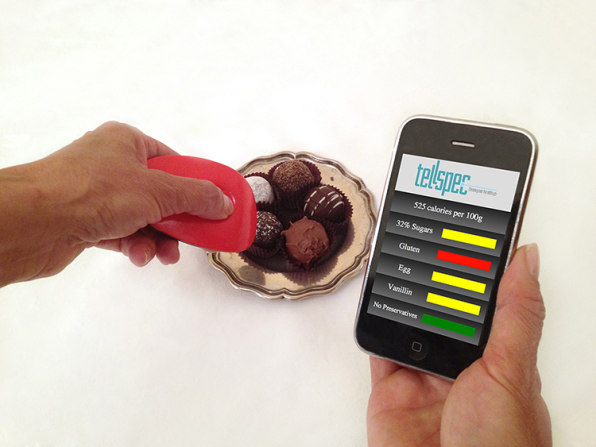how to make your design look professional
Kickstarter (and its more promiscuous cousin, Indiegogo) is full of half-baked hardware ideas. Some have a good shot of becoming fully-baked with time and funding, some are complete fantasies, but many fall into an intermediate zone–intriguing but difficult to evaluate. Or at least, difficult to evaluate if you're a lay crowdfunding enthusiast.
Product engineers Michael Ciuffo and Jason Haensly are product designers, and they run a blog where they go through crowdfunding projects as only an electrical engineer and a software engineer could. It's called Drop Kicker.
"There's a lot of projects out there that are making these outlandish claims, and they're asking too little money, or their timeline is too compressed, or what they say they're going to do has never been done before," notes Ciuffo. "I thought it would be nice to have a place where people who are anxious about spending money on a Kickstarter project can go and learn a thing or two about what goes into product development."
Their tag line is "proving a healthy dose of pessimism," but it's not just snarky takedowns–it's snarky takedowns chalk full of technical analysis, similar in content (if not in tone) to the engineering perspective the pair might offer in their day jobs as an electrical engineer and software engineer at Synapse, a product development consulting firm in Seattle. "Kickstarter is not even at the level in a lot of cases," Haensly says. (The pair are known as "ch00f" and "OccamsChainsaw" on the Internet).
They note the truly ridiculous projects that fly under the radar, like a program that guarantees gambling winnings, in a bi-monthly mop up. But they expend most of their effort pouring over the circuit boards and technical specs of popular projects.
The first question Haensly asks (and suggests others ask): What have they already built? "I would always be cautious if they're looking to raise money so they can start building a prototype," he says. "I've built prototypes and, man, they don't always turn out like they expected to."
That's fine if it's transparent, but all too often, people promise yet-to-be-built finished products to their backers, with not even a prototype in hand.

Take, for instance, the TellSpec food analyzer: a device that you can supposedly wave over of a food item and learn detailed nutritional information, down to its gluten content and whether it contains pesticides (Co.Exist did actually write about it here). The device in the video is–as the makers now admit–not itself a working prototype, but appears instead to be a big hunk of plastic.
"Every time I see a product being waved around and performing a task I think of the old divining rod gimmick," says Ciuffo. In the post itself, he went into the existing technology being promoted (Raman spectroscopy), and found that there were, in fact, handheld devices on the market that were being used–in pharmaceutical companies, to test for the purity for a single substance–but at a price in the tens of thousands of dollars. (They're offering their much more sophisticated product to backers for $250.)
But instead of concluding bad intent, he concluded they either misunderstand how difficult it is to bring a product to market, or they have plenty of funding elsewhere and are using crowdfunding just to drum up buzz and gauge interest. "Some approximation of the product they've promised is definitely possible, but they haven't shown a single bit of evidence that their solution actually works," they conclude. Backer beware.

Haensly's favorite posts are the ones where a deeper look at an implausible product leads to the recognition that it actually might work. He cites Coin: a single smart card to replace all your credit cards. "An always-connected daily device with a non-rechargable battery with two years of battery life?" he asks with mock incredulity. "I was sure that was not possible. But after a little bit of digging and some bar napkin math, it's plausible." (Though the post leaves some doubt about its genuine usefulness.)
Both the TellSpec and Coin easily met their funding goals, as have other (though not all) questionable projects that have caught the Drop Kicker's attention. But their goal isn't to stop projects, so much as to get backers asking the hard questions. "I was just scanning through Twitter today for comments," says Ciuffo. "There was one where someone said, 'Hey I backed this project it looks really cool.' And someone responded, 'Well you should check this out,' with a link to the blog."
"That's exactly what we want to happen."
how to make your design look professional
Source: https://www.fastcompany.com/3023614/what-happens-when-professional-product-designers-critique-kickstarter-projects